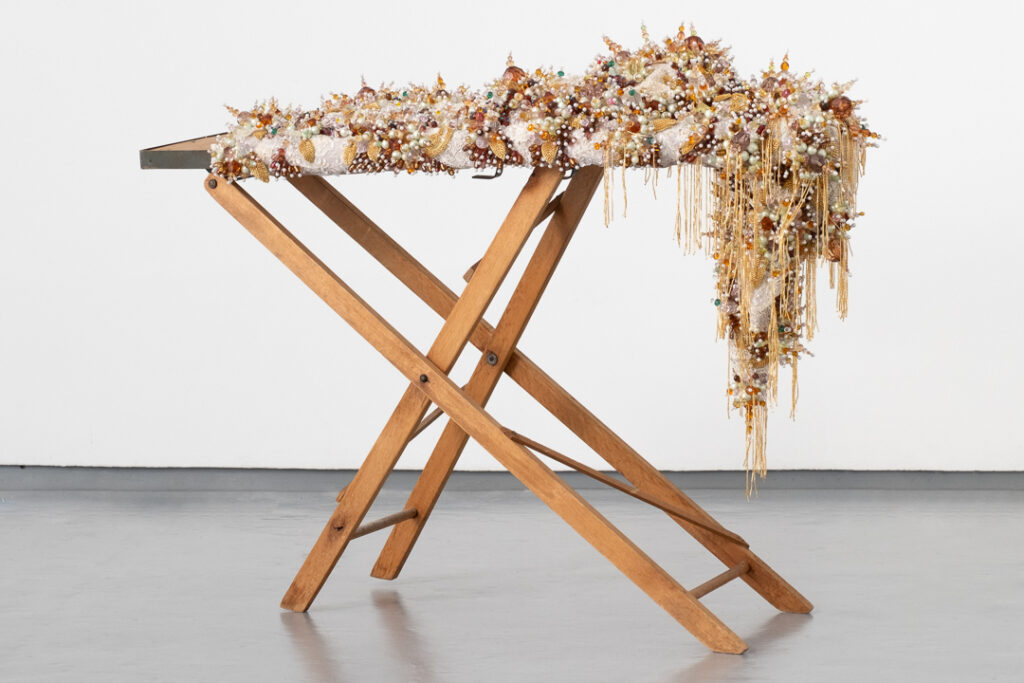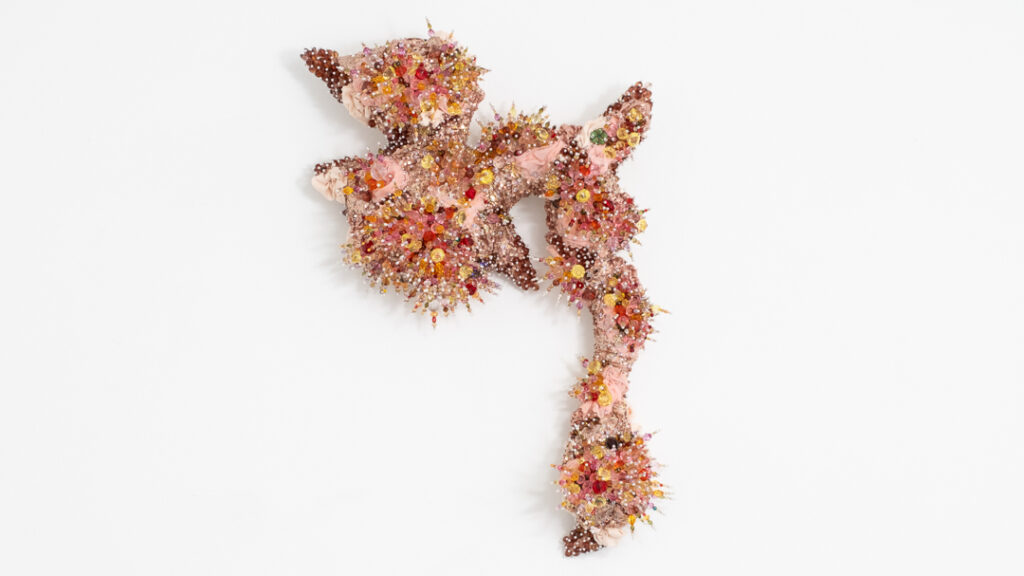
Jessica Hemmings reviews an exhibition about the material culture of the Cape Malay.
The Muslim population of South Africa are today known as Cape Malay. The term was used under Apartheid as yet another category of human segregation, but its pre-apartheid roots are often misattributed. While many assume the term relates to present-day Malaysia, the connection is not quite accurate. In the centuries before the Suez Canal opened in 1869, the Dutch East India Company (VOC) established the Dutch Cape Colony and used the port of Cape Town to resupply ships travelling the long journey from Europe to the Dutch East Indies—present-day Indonesia. Individuals whom the VOC considered a political threat were forcefully moved to Cape Town. Along with enslaved individuals from across Asia and Africa who were brought to the Cape during Dutch and British colonial rule, the population collectively became known as Cape Malay.
It is against these histories of enslavement, displacement and survival that Sahlah Davids’ exhibition celebrated the seamstresses of her extended Cape Malay family. The “Amatie” of the exhibition’s title designates a paternal aunt in Cape Malay: a language with diverse linguistic roots that include the Malay spoken in Batavia, present-day Jakarta, centuries earlier. Davids recounts in the extended statement which accompanies the exhibition:
My late Oupa [grandfather] would say, ‘They can take away everything, but they can never take knowledge away from you.’ The apartheid regime took away their homes, their rights, and their ability to afford an education. However, by learning the practice of our ancestors, who as artisans had used their skills to eke out a slightly better living as enslaved people – that in itself, however small, was a privilege others did not have.
Working with offcuts of cloth and embellishments from the seamstresses in her family, Davids’ sculptures are part homage, part contemporary reckoning. They carry, in the artist’s words, an “embedded patina of treasured and discarded objects”. Made with sequins, plastic beads, pearls and paste jewellery, the most compelling work in this show encrusts the surface of a wooden ironing board. Tumbling off one end, the impossible-to-iron surface seems to flaunt what may have once been a daunting amount of poorly paid washing and ironing with an excess of embellishment.

Nearby, a series of wedding crowns typically worn by Cape Malay brides and bridesmaids hang suspended above empty chairs. “I imagine,” Davids’ explains, “these figures having conversations around what it means to exist generationally, attached to our history, inspired by our resilience, and yet questioning the complexity of what it means to be both ‘Cape Malay’ and a woman positioned within the grey area of tradition and culture.” She continues, “As a young woman resisting the narrative of assumed subservience and proud of my attachment to Muslim identity, I am negotiating the complexity between the veil and that which is unveiled, simultaneously markers of independence, subversion, and resistance.”
Davids recognises that her family’s narrative both fuels this current work, but in many respects also shielded her from textile labour:
I have often wondered why my Ouma never taught me how to sew. I assumed I would burden her with my lack of knowledge and that teaching me the basics would be too tedious. But secretly, I wondered if the untold reason was the generational effort to afford me an education and career of my choice. I am deeply indebted to their efforts and in awe of their craft, which, in my family and perhaps others, is now lost, living in fond stories, old donkies, and rotting ironing boards.
Other sculptures in the exhibition are displayed on the gallery walls. Their forms offer no easy associations, but their colour palette is shared suggesting a larger garment pattern waiting to be matched and pieced together. Despite the material exuberance, the shadow of Cape Town’s once-thriving textile and garment industry hangs over these works. The World Trade Organisation’s free market policies of the 1990s flooded South Africa—and many markets around the world—with Asian imports. When Cape Town’s extensive textile and garment industry, which was the city’s largest employment sector, collapsed few opportunities emerged in its place. Some of the industry’s buildings in Woodstock and Salt River have begun to be consumed by gentrification, but Davids’ attention seems more attuned to the skills of these workers, whose expertise became obsolete overnight.

Sahlah Davids: Amatie, 10 August – 14 September, 2024, WHATIFTHEWORLD Gallery, Cape Town; follow @sahlahdavids
Jessica Hemmings is a Professor of Craft at the University of Gothenburg, Sweden. Recent publications include the second edition of The Textile Reader (2023) and Thinking in Motion (2024), a special issue of the open-access PARSE journal.

